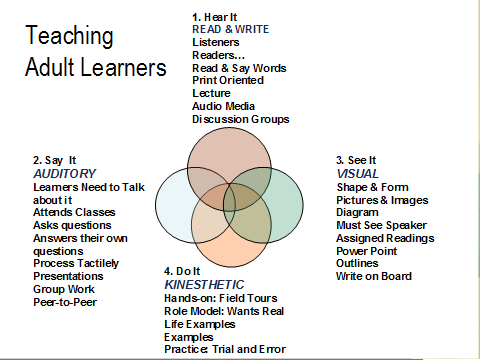| << Chapter < Page | Chapter >> Page > |
Figure 2: Adult Learning Characteristics

This chapter has focused on the adult learner, how we learn and the need for educational leaders to understand these dynamics. What are the multi-media applications which connect to the visual, auditory, verbal and kinesthetic learner? How do the changing technology practices impact the learner? The answers to these questions are found in the remaining chapters of this book.
Experiences of the adult learner continue to be the rich backdrop the educational leader can build upon. It also requires having educational leaders that are trained in learning theory – from a variety of perspectives, as found in this chapter.
Key principles for educational leader to understand are:
It is the first day back from summer break. As the new principal, you desire to know more about the teachers in the school. You decide to do a learning activity with the teachers that will help to begin to know them and therefore, to lead them better. You ask them to think about their summer break. Did they travel? Did they teach summer school? Did they work at another job? Did they take flying lessons? Learn to scuba dive? Etc.
You ask them to respond to a specific open-ended question. Choose one style from the following four listed that most closely fits your style (that appeals most to you):

Notification Switch
Would you like to follow the 'Ncpea handbook of online instruction and programs in education leadership' conversation and receive update notifications?